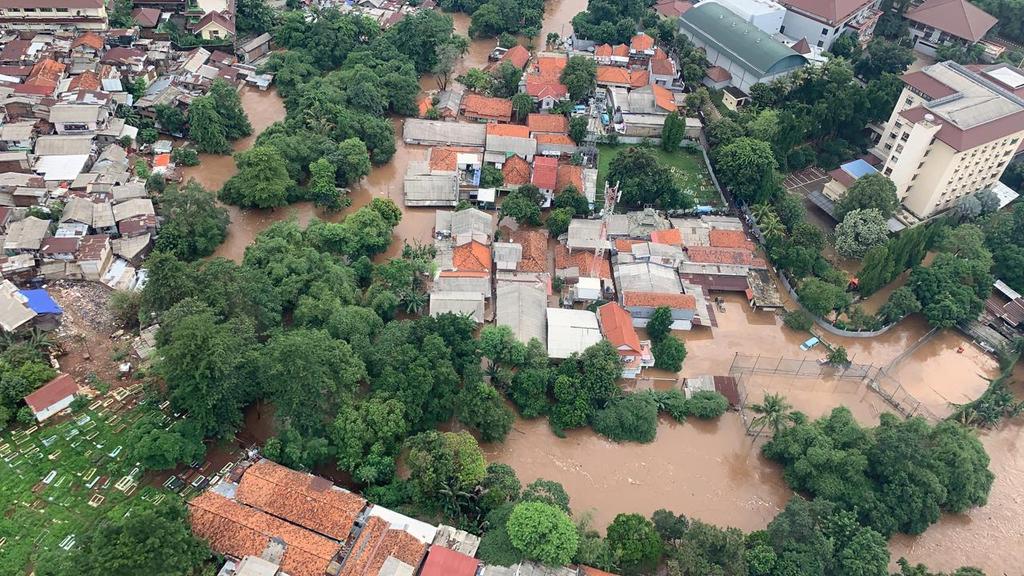
Coastal cities around the world are facing a growing and alarming problem – they are sinking.
While many people associate sea-level rise with climate change, the subsidence or sinking of land in these cities is often overlooked.
It’s a complex and multifaceted issue that poses serious challenges to the future of these urban centers.
In this article, we’ll explore the reasons behind this phenomenon and the potential consequences it could have on coastal cities.
What Is Land Subsidence?
Land subsidence, often referred to as “sinking,” is the gradual settling or lowering of the Earth’s surface.
It occurs for various reasons, but the most common factor is the excessive extraction of groundwater from underground aquifers.
When groundwater is pumped out for drinking water, irrigation, or industrial use faster than it can be naturally replenished, the ground above it gradually sinks. This subsidence can have dire implications for coastal cities.
Overexploitation of Groundwater
One of the primary causes of land subsidence in coastal cities is the overexploitation of groundwater.
As cities grow and the demand for freshwater increases, so does the extraction of groundwater from underground reservoirs. Regions that rely heavily on groundwater for drinking water or agriculture are particularly vulnerable.
In coastal areas, the extraction of groundwater near the coast exacerbates the problem, as it can lead to saltwater intrusion. When saltwater infiltrates the aquifers, it not only contaminates the freshwater supply but can also contribute to land subsidence.
Natural Processes and Geological Factors
While groundwater extraction is the leading cause of land subsidence, it is not the only one.
Some coastal cities are naturally subsiding due to geological factors. For example, areas situated on tectonic plate boundaries can experience subsidence as a result of geological activity.
Additionally, regions with sedimentary deposits, such as river deltas and coastal plains, are more susceptible to subsidence.
 Coastal Plains, which are highly susceptible to flooding
Coastal Plains, which are highly susceptible to flooding
The Consequences of Land Subsidence
The sinking of coastal cities has far-reaching consequences. First and foremost, it exacerbates the threat of sea-level rise.
As the land sinks, the relative sea level in these areas rises even faster. This phenomenon significantly increases the vulnerability of coastal cities to flooding, especially during storm events and high tides. It can lead to saltwater intrusion into freshwater supplies, threatening the availability of clean drinking water.
The infrastructure in these cities, including roads, buildings, and drainage systems, can be severely affected. Subsidence can result in costly damages and hinder a city’s ability to adapt to the challenges posed by sea-level rise.
Additionally, subsidence can exacerbate the impact of coastal erosion, as lower land levels provide less natural protection against the sea.

Coastal erosion
Cities at Risk
Several major cities worldwide are experiencing land subsidence.
Jakarta, the capital of Indonesia, is one of the most striking examples. The city is sinking at an alarming rate due to excessive groundwater extraction, and it’s also one of the fastest-sinking cities in the world.
Venice, Italy, is another iconic city grappling with subsidence. In the case of Venice, the extraction of groundwater from the surrounding aquifers and the pumping of natural gas from underground reservoirs have contributed to its gradual sinking.
Other cities facing this challenge include Mexico City, Bangkok, and New Orleans. They all share a common theme of rapid urbanization, overexploitation of groundwater, and geographical factors that make them more prone to land subsidence.
 The city of Jakarta flooded
The city of Jakarta flooded
Mitigating the Issue
To address the problem of land subsidence in coastal cities, a multi-pronged approach is needed.
First and foremost, there must be a reduction in groundwater extraction. Implementing sustainable water management practices, such as rainwater harvesting, improving water-use efficiency, and investing in alternative water sources, is crucial.
Coastal cities also need to adopt effective coastal defense strategies and adapt to sea-level rise. These strategies include building and fortifying seawalls, levees, and urban planning that considers the effects of subsidence.
The sinking of coastal cities due to land subsidence is a pressing issue that must be addressed urgently.
By taking proactive measures to manage their water resources and mitigate the effects of subsidence, these cities can continue to thrive and adapt to the growing challenges of a changing climate. Failure to do so could have dire consequences for their future.




